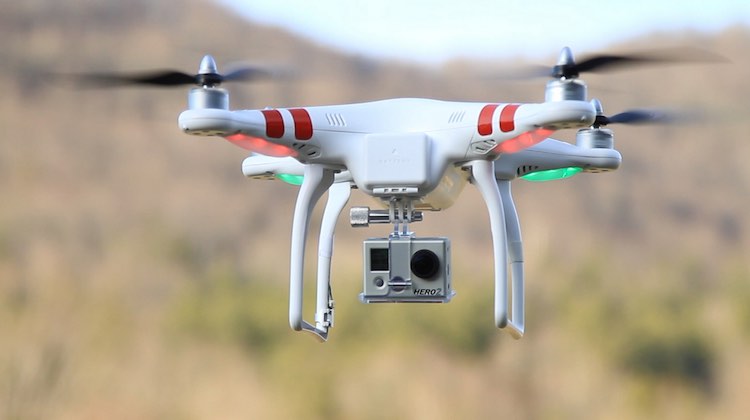
One of the key figures formulating Australia’s drone policy has predicted the country will eventually need to use machine learning AI to control our crowded airspace.
Simon Moore, an assistant secretary of aviation safety and future technology at the Department of Infrastructure, said he thinks there will one day be “hundreds of thousands” of drones in the sky.
“The numbers of things that are flying in the sky is going to increase quite dramatically,” he said.
Moore was talking to Australian Aviation as part of a drone special edition set to be published early next month. To subscribe, click here.
In September, Deputy Prime Minister Michael McCormack unveiled the government’s new masterplan to make Australia a world leader in drones and flying cars.
Moore is one of the key figures involved, and believes new technology will radically change the industry sooner than many believe.
“One of the excellent things about working in this space is that we’re not talking about science fiction here,” said Moore. “We’re not talking about hypotheticals. It’s a question of when these things start operating, not if these things start operating.
“To run an air space of tens of thousands or 100,000 objects, machine learning [AI] will make more sense than what we’ve currently got.
“And that’s why the discussion on unmanned traffic management is so important. Because, fundamentally, that’ll be the mechanism, which we as the industry control how these things move around and how they interact with each other and more traditional types of aircraft.”
He also talked up the advent of electric vertical take-off and landing vehicles (eVTOL), better known as flying cars or taxis.
“The first trials will be piloted and will probably look a little bit like traditional helicopters, just electrified,” said Moore. “But the economics won’t be there in the longer term – there’s going be a very quick move after that to remove the pilot, as soon as it can be safely done.
“I mean, in terms of when we’re going to start seeing trials, it’s a little bit more difficult. Whether it’s two, three, five or 10 years is anyone’s guess. But they’re the sort of time frames that we’re talking about here.”
You can read the National Emerging Aviation Technologies Policy paper here.
















Danny
says:I’m an aerospace engineer and also an RC recreational fixed wing pilot with a number of friends and colleagues who have flown both heli’s and drones. Scanning this paper, not only does it have zero basis in reality this is all a part of a concerted effort to throw model aviation, a key aviation nursery, under the bus for short term dubious commercial gain to monetise the 0 – 400 ft airspace.
The elephant of the room that no one wants to talk about is the limiting factor of the energy density of Lithium Polymer batteries. While their energy density has gone up and while they are enough to be viable they are not enough to be commercial compelling. For example in extreme aerobatics , the Extreme Flight 60″/1.5m class come in at the 2.5kg point. However they have half the flight time of the internal combustion engine counterparts.
What all this means is why we shouldn’t consider this, to say this should totally dominate our thinking, particular to the damnation of model aviation for dubious commercial gain is short sighted at best. Also given Model aviation is such a key engineering/aviation nursery and arguably it’s most notable graduate was Neil Armstrong to sacrifice this on the altar of short term commercial gain will have disastrous repercussions for generations to come.
Marum
says:Of course Danny. Everything has to have a little price. Once the 0 to 400 foot airspace is bought and owned, we can then regulate those pesky amateurs. large corporations can buy a few acres somewhere, apply tor restricted airspace above it, and sell memberships to model aircraft enthusiasts.
Why should these pests be able to use the sky for nothing?
Nothing gets you nothing,
Everything has got a little price.”
Bow down to the altar of MAMMON human….Marum Katze.